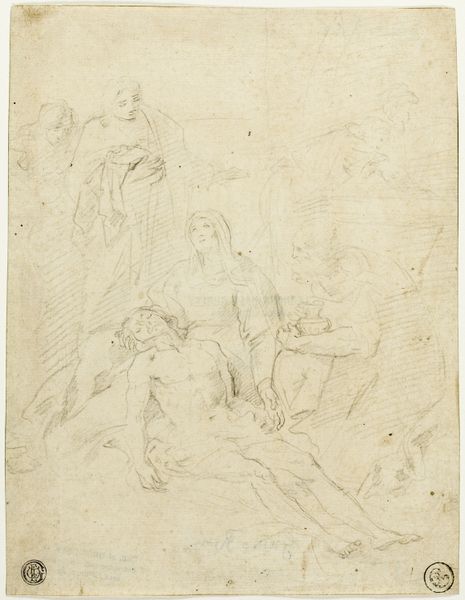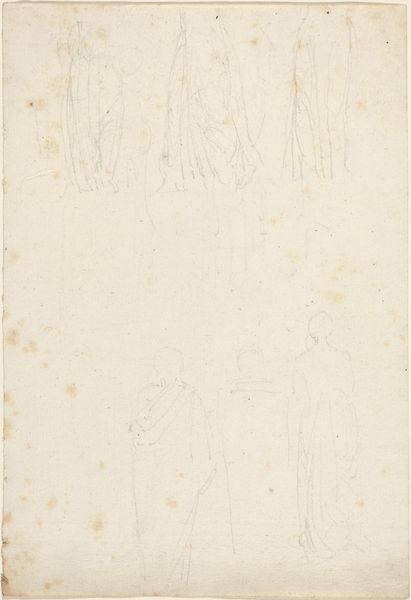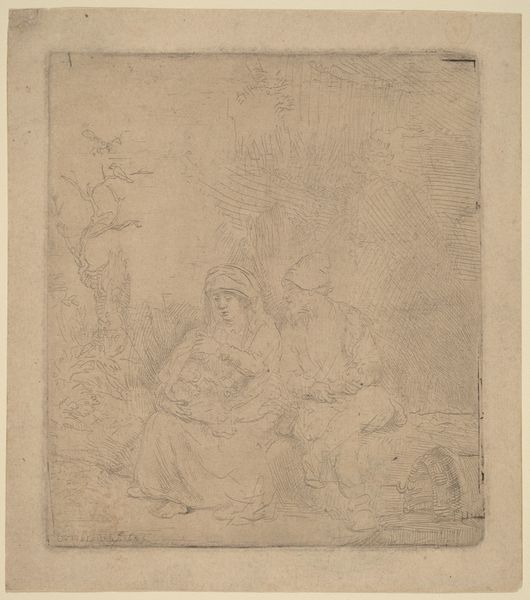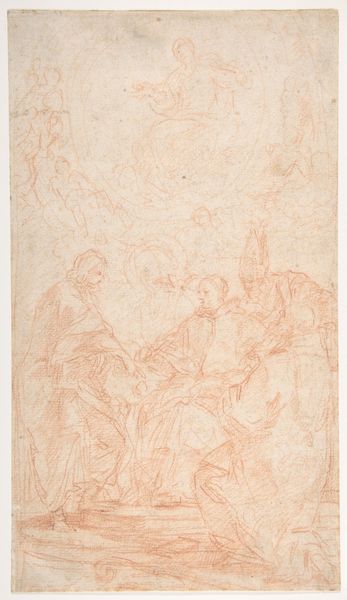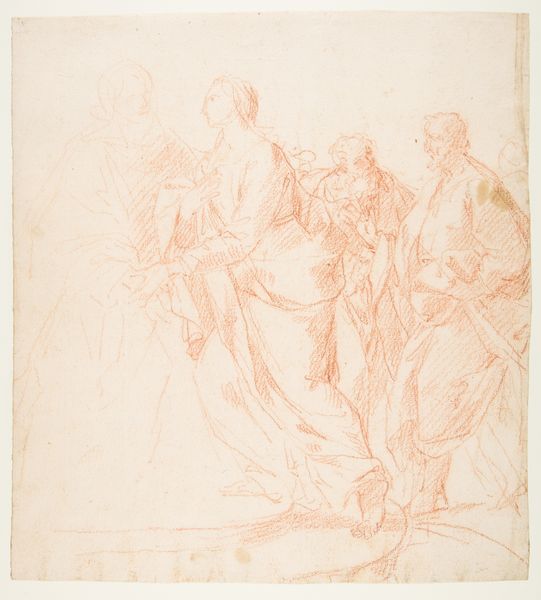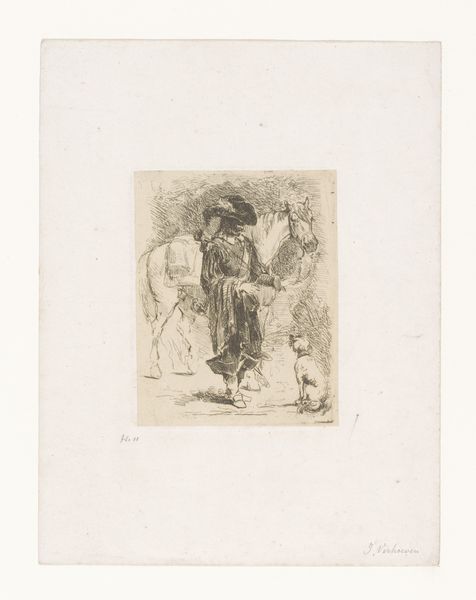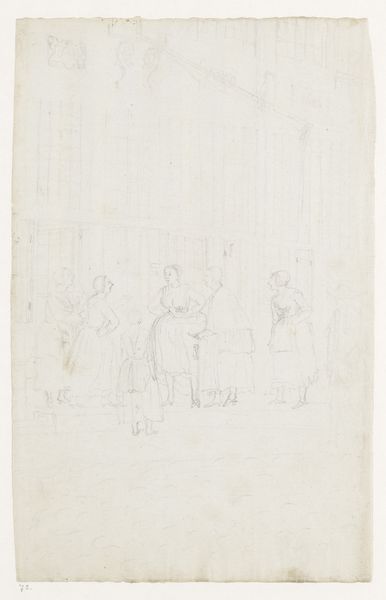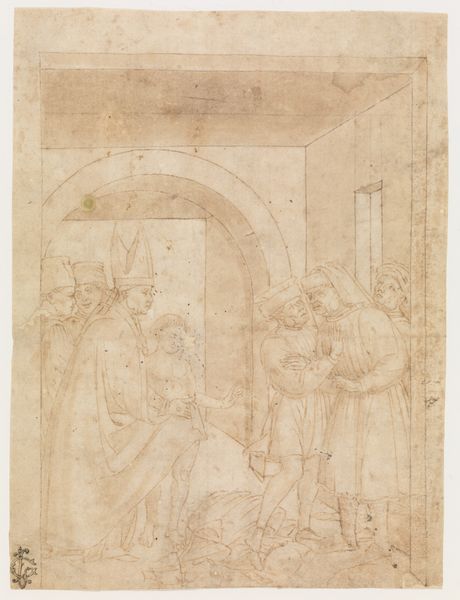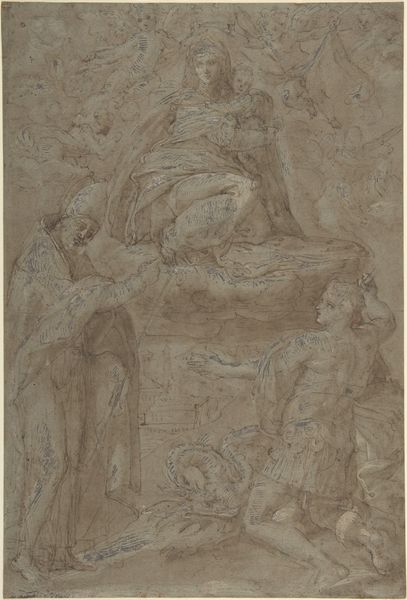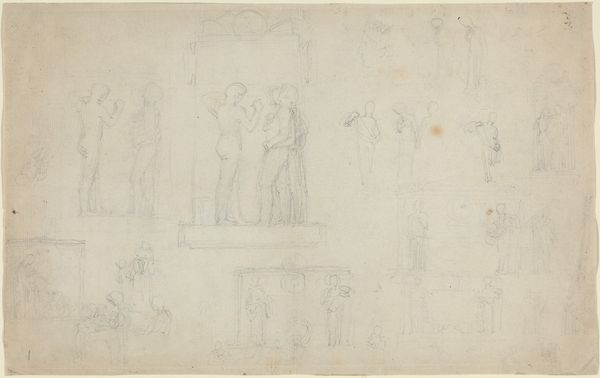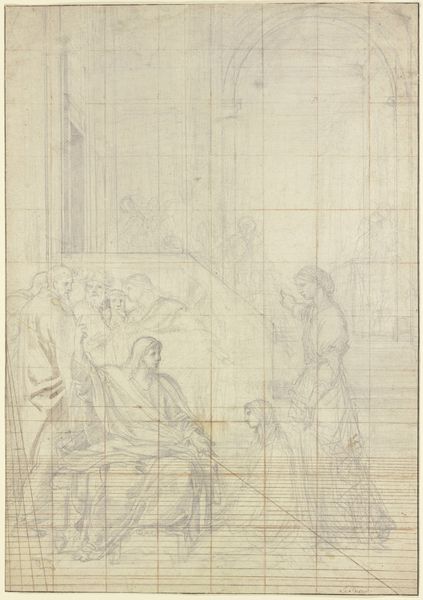
drawing, paper, pencil
#
drawing
#
baroque
#
figuration
#
paper
#
pencil
#
history-painting
Dimensions: height 168 mm, width 146 mm
Copyright: Rijks Museum: Open Domain
Curator: This pencil drawing on paper, titled "Schets voor wonderbaarlijke hostie in de as teruggevonden," roughly translates to “Sketch for a miraculous host found in ashes”. It was created by Jacob de Wit sometime between 1705 and 1754, a fascinating window into Baroque sensibilities. Editor: It certainly feels like a preliminary sketch. There's a dreamlike quality to the composition; the lines are faint, giving the figures an ethereal appearance. It evokes a sense of quiet reverence, despite the lack of strong contrast. Curator: De Wit's choice of a subdued medium is interesting. Considering the grand narratives typically associated with Baroque art, this sketch seems intimate and almost secretive. It captures a moment of miraculous discovery—religious history, in essence. I suspect it reflects the era’s investment in depicting extraordinary events through everyday means. Editor: I'm intrigued by the way he’s staged the scene. It feels like a tableau. One figure holds aloft something small—presumably the host—while others gather around in gestures of wonder. The lack of sharp detail draws attention to these symbolic gestures of piety and acknowledgement. But is that too simplistic of an assessment? What does the history suggest? Curator: Actually, considering that de Wit did lots of art for clandestine Catholic churches in that period of Dutch history, which was heavily dominated by the Protestant church at the time, perhaps its rough-hewn look helped protect the drawing from unwanted attention and made it possible for him to share the design with his patron in private? That way it doesn't show his hand about making imagery about "popish idolatry" out in the open. Editor: A good point. Perhaps the faint pencil strokes could have provided a safe space for experimenting with images of the kind that the church would frown upon otherwise. And for a sketch for history-painting, what did De Wit intend for its place or usage, do we think? Curator: These preparatory studies typically lead to a grander work, perhaps an altarpiece or a history painting within a private chapel. De Wit excelled in illusionistic ceiling paintings, and I think there’s an implicit dynamism and sense of potential movement, a feeling he might capture that on a ceiling some day... Editor: In any case, this preliminary piece offers a unique perspective on the visual vocabulary that supported—or defied—public expectations in the early modern world. It asks, how does power and religion come into play when defining social imagery? It's always relevant to inquire. Curator: Precisely. And examining de Wit's method through the surviving drawing sheds new light on art's political life, I find. Thanks.
Comments
No comments
Be the first to comment and join the conversation on the ultimate creative platform.
